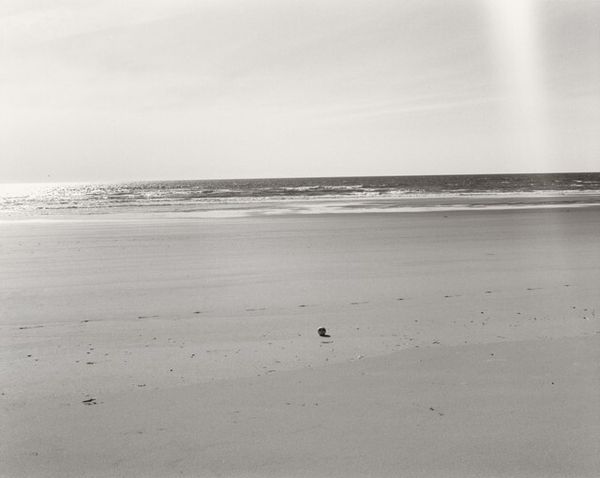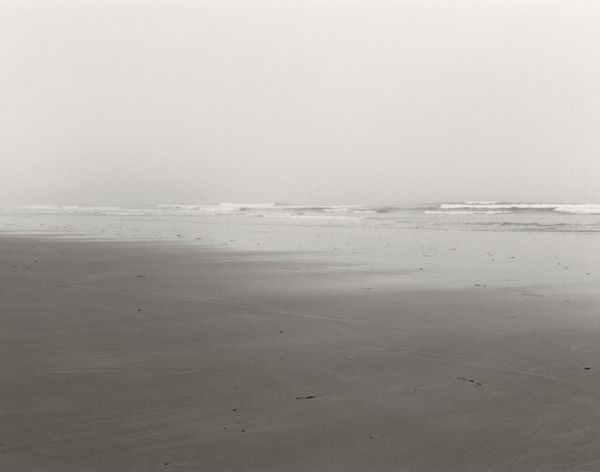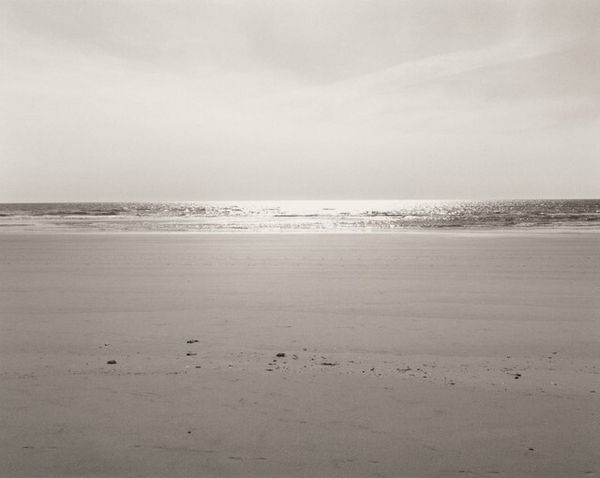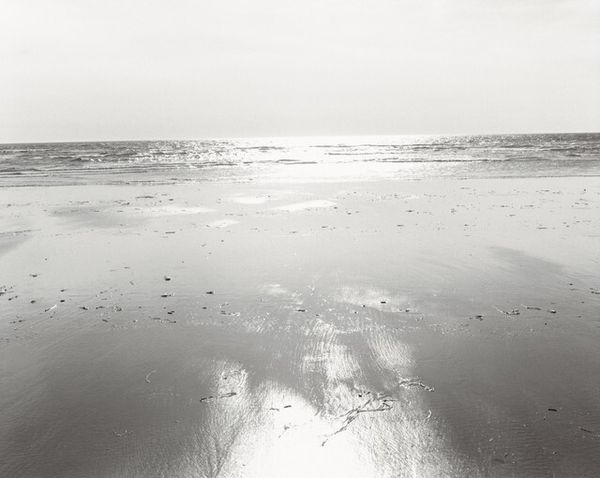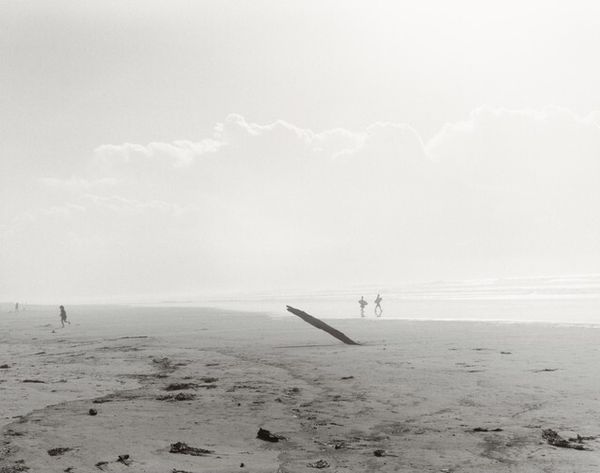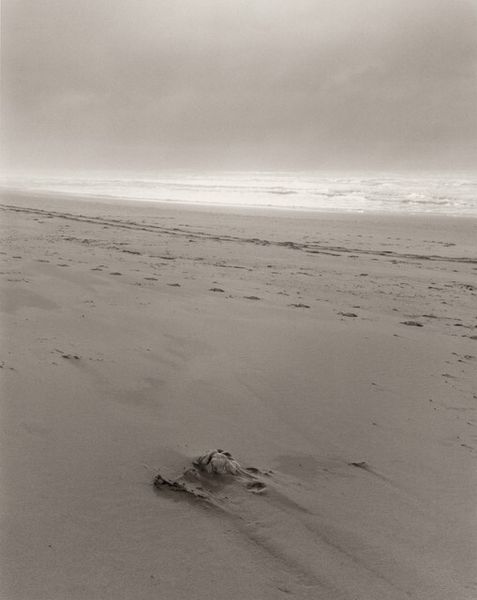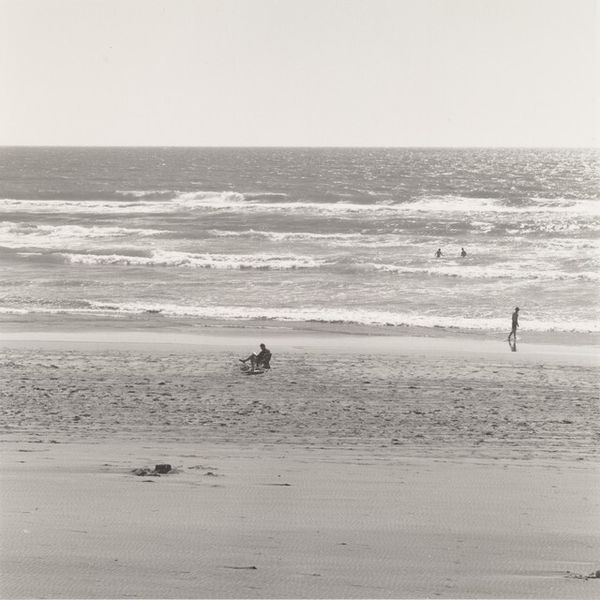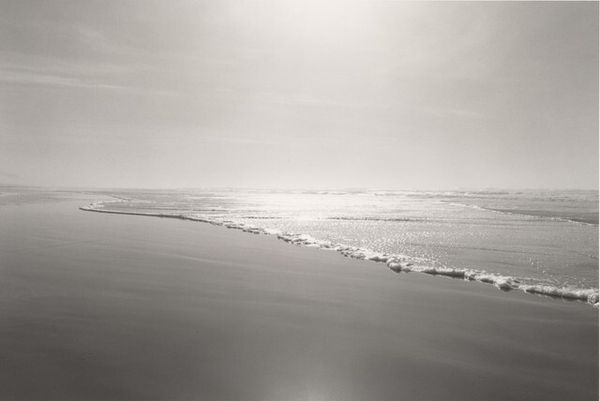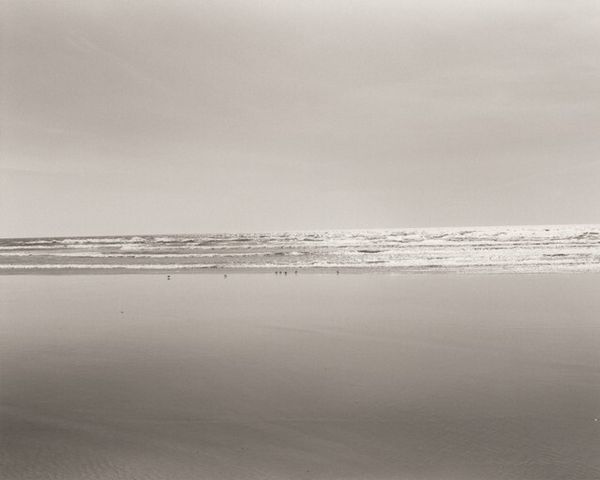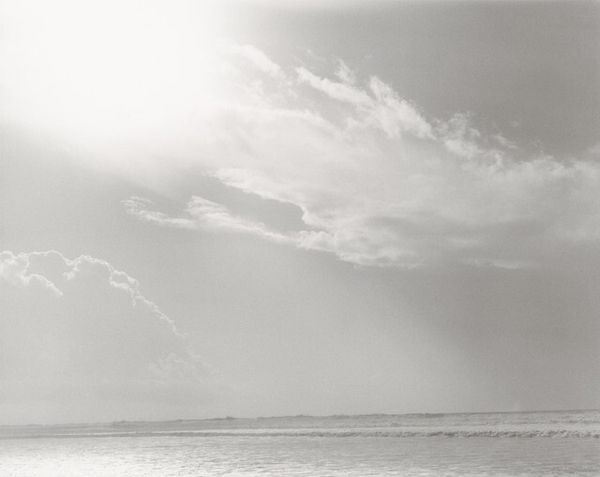
#
cloudy
#
black and white photography
#
countryside
#
warm monochrome
#
outdoor scenery
#
sky photography
#
monochrome photography
#
monochrome
#
skyscape
#
shadow overcast
Dimensions: image: 22.5 × 28.5 cm (8 7/8 × 11 1/4 in.) sheet: 27.8 × 35.5 cm (10 15/16 × 14 in.)
Copyright: National Gallery of Art: CC0 1.0
Robert Adams made this gelatin silver print, *The Sea Beach*, sometime in the late 20th century. The photograph depicts a desolate beach, strewn with driftwood and marked by footprints, under a heavy, bleached-out sky. Adams’ work emerged from a broader shift in American photography. In the late 60s and 70s, photographers began to turn away from the heroic landscapes of figures like Ansel Adams, and instead focused on the impact of human activity on the environment. Adams’ photographs often depict the landscapes of the American West, marked by suburban sprawl, industrial development, and environmental degradation. He encourages us to consider the social and economic forces that have shaped these landscapes, and to reflect on our relationship to the natural world. The beauty of Adams’ work lies in its subtle critique, and his photographs serve as a reminder of the importance of environmental awareness. As historians, we can look to sources like government documents, urban planning reports, and environmental studies to better understand the history of the landscapes that Adams depicts.
Comments
No comments
Be the first to comment and join the conversation on the ultimate creative platform.
